Noiser
Prohibition: How the 18th Amendment Shaped American History
Play Short History Of... Prohibition
In 1920, the production, importation, transportation, and sale of alcoholic beverages were banned in the USA. But how did it come about? Why was it needed? And why was it repealed after just thirteen years?
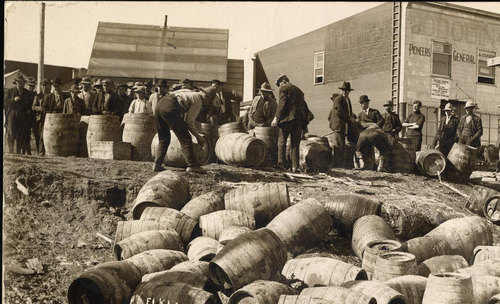
How Prohibition Started
 In 19th-century America, concerns started to be raised about the effect alcohol was having on social stability.
In 19th-century America, concerns started to be raised about the effect alcohol was having on social stability.
Alcohol was such a pervasive and destructive force in so much of American life, particularly in the small towns that were growing up in the frontiers, where the only entertainment was the local saloon. This was an all-male institution. Men would go there and spend way too much time and drink far too much, which was very destructive to family life.
Daniel Okrent, author of Last Call: The Rise and Fall of Prohibition.
The Anti-Saloon League, or ASL, was formed in 1893 by Reverend Howard Hyde Russell. By 1900, it was the most powerful prohibition lobby in America. Black civil rights leaders such as Booker T. Washington and Ida B. Wells endorsed temperance and prohibition. Often, women were the most vocal in favour of temperance.
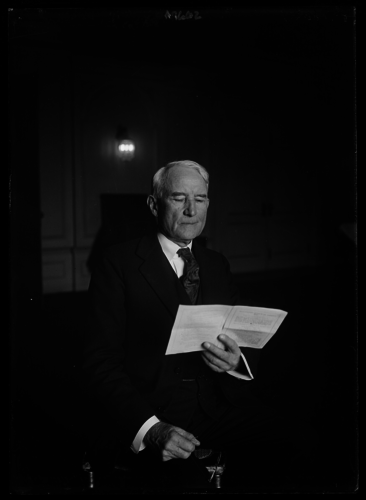
Things came to a head when the US entered World War I in 1917, and an emergency law diverted grain used for brewing into producing food for the war effort. Then, in 1919, the National Prohibition Bill was proposed. President Woodrow Wilson vetoed the bill, but with prohibitionists controlling Congress, it passed anyway. The act, known as the Volstead Act after the congressman of the same name, passed into law. As of New Year’s Day, 1920, it was now illegal to manufacture, transport, and sell alcoholic beverages. The age of prohibition had begun.
Alcohol Moves Underground
But Americans weren’t going to let some pesky law come between them and their booze.
The first noted illegal sale of liquor happened just two hours after prohibition went into effect. Production escalated rapidly. Straight away, small stills or ‘alky cookers’ found their way to the market as people started to brew their own moonshine. In the first few years of the decade, law enforcement officers seized just under 700,000 stills.
So-called “Bathtub Gin” was brewed in households for personal consumption. At the other end of the spectrum were altogether bigger operations. Enterprising criminals bought up closed breweries and rehired former employees to produce the same alcoholic drinks illegally. But for some, booze from outside American borders offered the best opportunities.
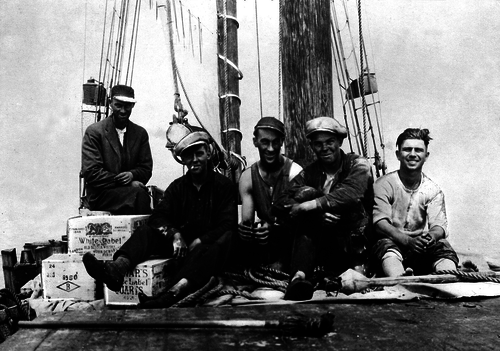
The land border between Canada and the lower 48 states is the longest in the world, at about three and a half thousand miles. And it’s incredibly permeable, much of it just a vast prairie with simple markers to tell you which country you’re in. Canada had motels full of booze, offering crates for anyone willing to risk hauling it back to the States. On the US side of the border, roving bands of government agents chased down anyone crossing international lines. Rum Running, as it became known, was big business.
Some smugglers preferred subterfuge: lumber trucks with secret compartments or big saloon cars with false floors and hollow seats. Other drivers opted for speed. Fast cars were modified, their engines beefed up, and suspension improved to handle the weight of illicit booze. The rum runners got so good at outpacing the police on the rural dirt roads that they started to meet at weekends to race and show off. After prohibition ended, these meetings would develop into NASCAR.
The Rise of the Speakeasy
Drinking at home was all well and good, but the people of America still wanted to have a night on the town to enjoy themselves. Speakeasies (illicit establishments that sold alcoholic beverages) began popping up, and they were both wildly popular and hugely profitable. When they were raided by police and shut down, they sprang back up just as quickly. Sometimes, they were hidden in plain sight as legitimate soda shops and entertainment venues. Other times, they were so well hidden that customers needed to know where to look.
The most imaginative I know about is a freight elevator in a building in New York City. The building was devoted to other uses, but the freight elevator was a functioning bar. People got on the elevator and rode up and down while they were drinking, and the door was closed, so there was no immediate access to it.
Daniel Okrent, author of Last Call: The Rise and Fall of Prohibition.
Flamboyant cocktails were often the drink of choice. Flavoured sodas and fruit juices disguised the visible contents and masked the taste of bathtub gin or tainted industrial booze. While cocktails had been drunk previously, prohibition made them a necessity.
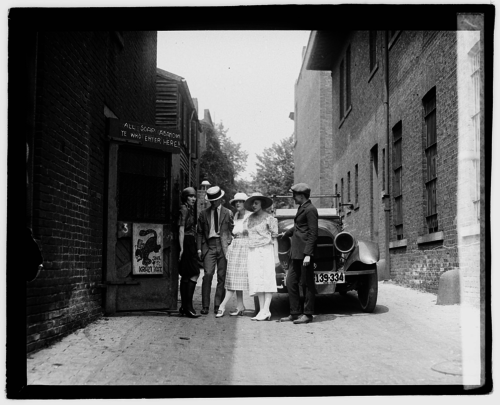 By the end of the 1920s, it’s estimated there were over 32,000 speakeasies in New York City alone, ranging in size from a cramped back room in a tailor’s to a nightclub big enough for hundreds of revellers. The speakeasies themselves ushered in societal changes in America. Unlike the old saloons, they were places where women and men drank together. As traditional saloons disappeared, so too did the macho connotations of drinking after work.
By the end of the 1920s, it’s estimated there were over 32,000 speakeasies in New York City alone, ranging in size from a cramped back room in a tailor’s to a nightclub big enough for hundreds of revellers. The speakeasies themselves ushered in societal changes in America. Unlike the old saloons, they were places where women and men drank together. As traditional saloons disappeared, so too did the macho connotations of drinking after work.
Crime Pays
Criminal gangs were not a new thing by the time prohibition rolled around. For years, they had operated in major cities, controlling gambling, racketeering and a whole host of other illegal dealings. Before long, many of the speakeasies were owned by the gangs themselves. One city in particular became synonymous with organised crime during prohibition.
Chicago.
At the start of Prohibition, a tough twenty-year-old Brooklyn native spotted an opportunity. He moved out to Chicago to become a bouncer for a gang known as The Outfit. Thanks to his nimble mind and brutality, he quickly made a name for himself. Soon, everyone had heard of Alphonse Gabriel Capone. By 1925, Big Al was the new boss of the Chicago Outfit. He oversaw a rapid expansion programme accompanied by unprecedented violence. In that year alone, 133 gangsters were murdered. Soon, the Chicago Outfit’s operations reached as far as the Canadian border. Gang wars in the city culminated in the St. Valentine’s Day Massacre in 1929.
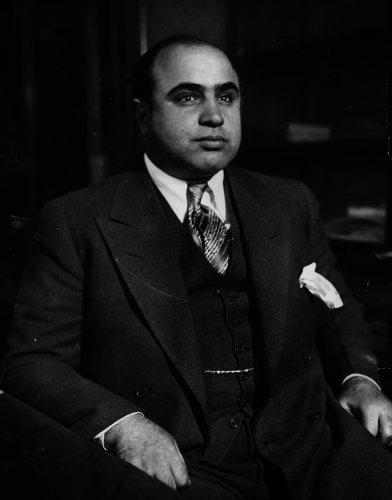
The End of Prohibition
Prohibition never worked as intended. The population still drank alcohol, but there were some unintended consequences. Rich Americans could afford the good stuff—the branded liquor flowing over the border from Canada or the Caribbean. Poorer customers had to take their chances with moonshine, which could contain dangerous alcohol levels or impurities from homemade stills. During the 13 years of prohibition, it’s estimated that 10,000 people died from drinking poisoned alcohol. Thousands more were paralysed or blinded.
Critics of prohibition laid the blame for the poisonings squarely at the door of the White House. The movement against prohibition started to swell. Even those who initially supported prohibition were horrified by the hypocrisy and rampant lawlessness it had brought about.

The 1932 presidential election was held against the backdrop of the worst economic crisis in history. Hoover was opposed by the Democrat Franklin D. Roosevelt, who promised that if elected, he’d put an end to prohibition. To the American people, it was a no-brainer. He won by a landslide.
Finally, on December 5th, 1933, the Eighteenth Amendment was repealed. The manufacture, transport, and sale of alcohol were once again legal.